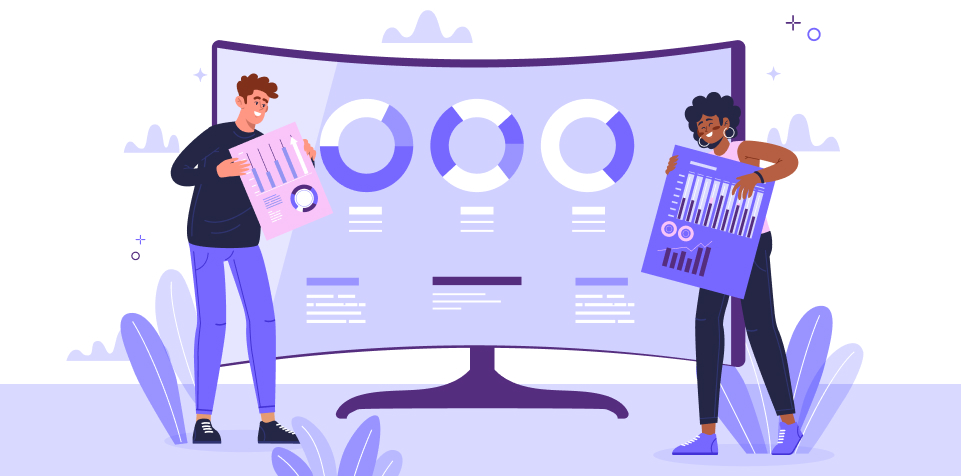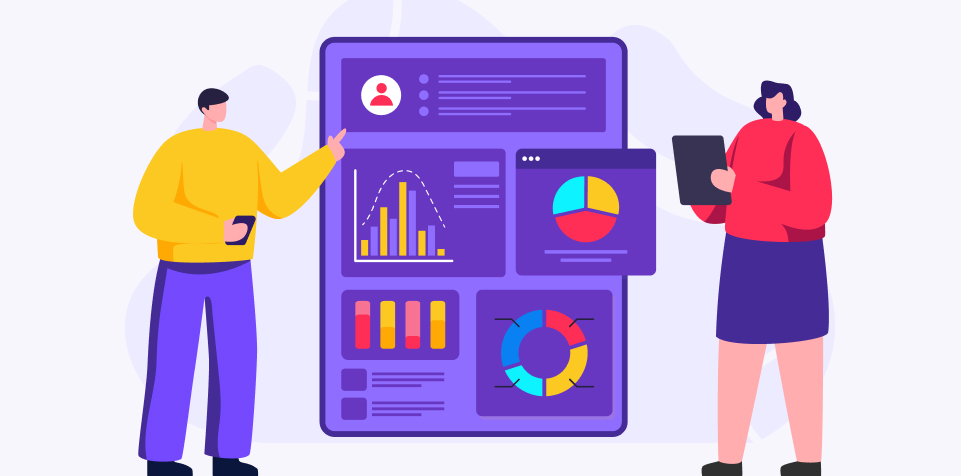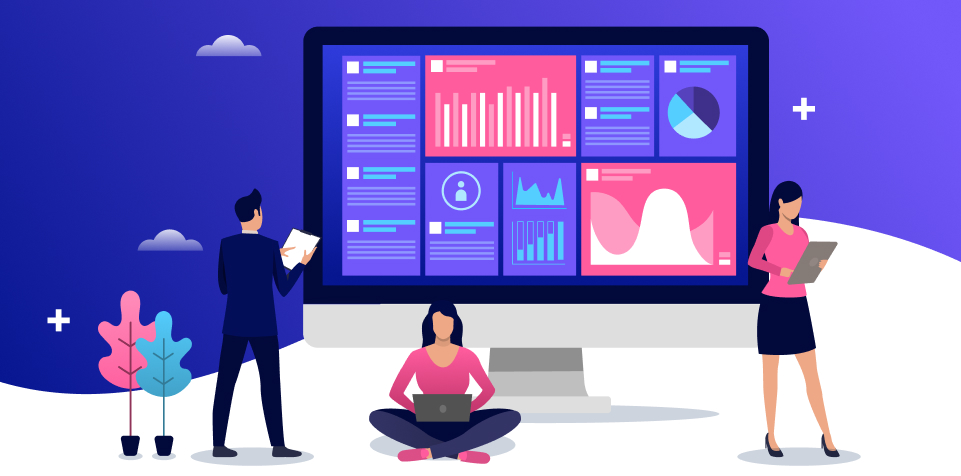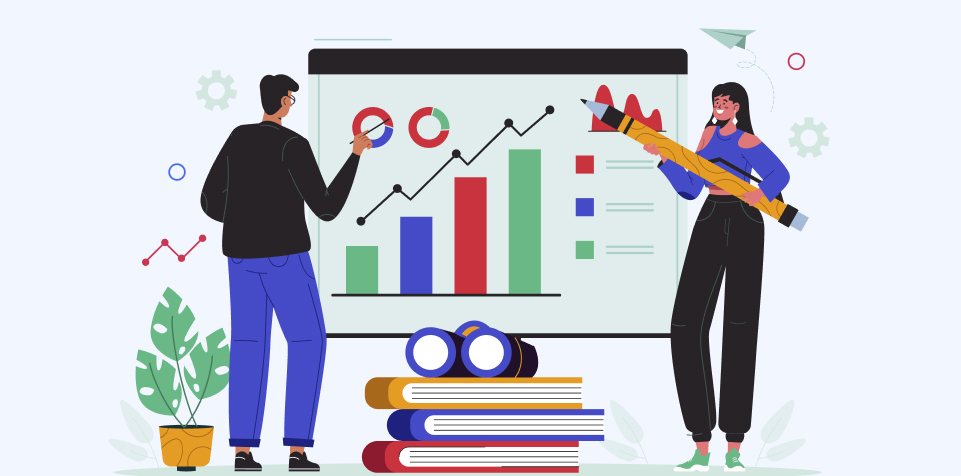Data Storytelling: How can you tell a perfect story with data
March 12, 2024

Table of Contents
Storytelling is a centuries-old method to make humans understand themselves and the kind of world they live in. In the past few years, data storytelling has hit a new wave in the field of innovation and analytics for making good decisions in business. The quest to make the right decisions depends on the kind of information that we work upon. The real challenge lies in delivering the right kind of information at the right time.
Businesses need to capture the right information at the right time to make a perfect data story, helping them achieve business goals and also set a new trend of innovative techniques. Practicing storytelling is one of the most sought-after skills nowadays. Experts who know data storytelling can understand and translate data into meaningful insights, a crucial process in any decision-making. Moreover, the art also lies in connecting such relevant information to your audience, motivating them to act on the decisions.
The article explores what is data story and data storytelling. You will also get useful insights on creating a neat, clear, and precise narrative around your data. So let us begin.
What is a data story?

A data story is an insightful narrative around a dataset, providing broader implications. It is not about showcasing technical aspects of any data, but rather it focuses more on turning them into a qualitative analysis that reflects domain expertise and also meets with the business goal and objectives. It is beyond making those great charts and data presentations. At the core, data stories have three main elements: data, visuals, and narrative.
What is data storytelling?
A skill to design and create catchy and meaningful narratives by harnessing data, contextualizing it, and presenting it to the audience is called data storytelling. It takes a lot of data analysis, statistics, and wide research to craft an appealing data story. Another aspect called data visualization, contextual analysis, and presentation is also implemented here to create the best data story.
Data storytelling has been one of the most successful ways to create new knowledge based on data and thereby make decisions. It is an immersive practice incorporating knowledge and skills based on various disciplines. Many businesses practice this concept to address various kinds of challenges in their fields.
Importance of data storytelling

Data storytelling happens when you share the insights derived from patterns and collected information. For example, you can find out how effectively your new business strategies are working based on the fluctuations in the revenue from month to month. Like Kriya RevGen is a hotel revenue management system created by Softqube Technologies. Our data experts analyzed and perceived various nuances of revenue managment from the gathered sources of data, and each set of data empowered us to build great data stories. Every story created out of data can inspire change in the business and in the audience. It also simplifies complex ideas with seamless communication, helping stakeholders to make informed decisions.
Here are some of the topmost benefits that can be obtained from data storytelling techniques:
- It helps break complex data more understandable, giving audiences room to grasp the concepts easily
- Catchy narratives and appealing visuals keep the audience engaged, enhancing retention
- Data storytelling can help make informed decisions as they are based on evidence and research
- Stories create memories in the minds of audiences, having a lasting impact on their lives
- Powerful narratives can increase trust and influence stakeholders
- Narratives and insights can give a human touch as the story relates to the audience with their lives
- Data-driven stories accelerate empathy and help companies connect effectively with their customers’ needs
- Data storytelling can lead to discoveries that may unfold new trends and patterns
- Stories from data can address challenges and help solve problems with strategic techniques
- Teams get unified around data and this promotes healthy collaborations where everyone will work for a common goal
- Companies practicing data storytelling will always remain over the edge of their competitors
- All the jargons are eliminated and complex ideas get super simplified, enhancing direct and very communication
- Data storytelling can help your business understand customer choices and preferences, behavioral patterns, and much more
- Data storytelling can also help in conducting effective marketing campaigns
Data Stories vs Data Visualizations
The below table will give you a clear picture of the differences:
| Data Stories | Data Visualization |
|---|---|
| They are much broader and have wider perspectives | They are pieces of data stories, used to tell a part of a broader story |
| Heavily relies on industry expertise and communication skills | Helps deliver various concepts in a narrative |
| Used for crafting data analysis and visualizations | Breaks the data into who, why, what, and how of the broader story |
| Data story used for creating several data visualizations | They help clarify iterations in the entire data storytelling |
How can you tell a story with data and analytics?

Identify the story
Determine the message that your data tells you for building an effective data story. You can always start by asking hypothetical questions, compiling answers, and taking a dig into some relevant data to find real answers. When considering different types of stories, you can ask yourself:
- What are your objectives?
- What do you want to explain?
- What are you doing for a buy-in on a proposal?
In addition, there are many ways to unfold the true derivations of your story and the story. This is possible only after you collect and analyze data and further put it into various processes like looking for correlations, identifying trends, drawing comparisons, and looking for outliers. You may also need to pay attention to data that is counterintuitive.
Take a deep look into your audience
Find out the exact audience to whom you need to convey your story. Check their key backgrounds and analyze all the technical complexities involved post-analysis. Search for those components from the story that directly will impact your audience, creating immediate connection. While you are building your story, you can always ask yourself questions like:
- Who is my audience?
- How relevant is my story to the audience?
- Is there any room to solve the problems that they care about and need some help?
- Have they ever known about this story from anyone before?
Also, find the age, job, demographics, and subject matter expertise of your audience. All this information will help you understand and respond to your stories.
Determining the purpose of gathering data
Too much data on the plate will overwhelm you initially. However, to construct a great data story, you must know which data matters the most. Being in business, you must find out the relevant information that can help you create a broader narrative. This is a challenging task, yet it helps a lot further in decision-making. You can begin with identifying data that talks about topics that you wish to explore and avoid looking into those datasets that have fewer possibilities of deriving anything concrete. For example, Softqube Technologies created an exceptional platform to understand user touchpoints of key consumers regarding their online purchases, usage and advocacy. Creating a data story about customer experiences, sales data, product usage data, and feedback data will be more useful. Here employee experiences may not be so relevant. So we did filtered our data and removed irrelevant information helping our client to obtain tailored real-time analysis across competitors, helping them understand the strengths, weaknesses, and positioning of their product.
Data analysis and gaining insights
Identifying the most relevant data will lead to finding insights that add some meaning to your business. Moreover, some key datasets correlate with each other sometimes, and finding these points will help you further. After digging into such relationships, you can create general themes for the data store.
Finding effective data visualizations
With data visualizations, you can help the audience understand the reasons for the story. With vivid visualizations, you need to choose the best one for your audience. Make sure it represents all the aspects of the data analysis. At this point, you must be very sure about the reasons for data visualization. For visualizing your data in a powerful communication mode, you can use flow charts, infographics, bar graphs, pie charts, road maps, and scatterplots.
Creating context
Gathering data is not enough. You need to turn it into an optimal data story. Any domain expert can craft a powerful narrative and communicate seamlessly with the audience. So always make sure you can weave the context and data insights in combination. It will be beyond giving an overview at the initial stage and digging deeper into data visualizations. By framing the data insights with your business reality, your audience will get the right information that they can believe in. Hence, correlation between various data sets that are industry-specific can create a lasting impact.
Framing a story around data
Any traditional story includes an introduction, an engaging plot that builds tension with problems around, and a climax that provides a crucial moment or insight, with leading action that will resolve the problem, ending with a resolution. With this flow, every data story succeeds. All you need is to frame a clear structure that is relatable to your audience’s emotions and thoughts so that it can capture their attention. You can always create a framework for consuming information that may be already in the flow, however, you can present it differently and with great innovation.
Editing for clarity
Your data story must be clean and precise. Just like any writing or presentation that needs editing and review, your narrative must also be refined and completely clear. Data stories are preferably shorter, more insightful, and add more weight with fewer words. Avoid fluff as it can distract the audience from the real plot. Your audience must focus on what really matters to them and your business.
Tips to create an effective data story

After understanding the process of creating a clear data story, you must take away some useful tips and tricks that can make your narrative more effective and easy to understand.
Don’t skip the visuals
Visuals will always stand by as a great support to represent your dense data. It can quickly comprehend the answer out of the vast information. Most viewers are going to connect directly by looking at the visuals when you share. So choose the best style and technique that will represent the insights and give clear evidence of what you want to convey.
Keep it highly relevant
With so much information packed in the data, you must refine it with the most relevant points for your narrative. Any sort of irrelevant data must be identified and avoided to distract your audience. This also goes true with data visualizations and presentations.
Your data must be timely
Trends and context evolve from time to time. So, use the most updated data that talks about the latest and fresh analysis. Telling a story from outdated data is useless and a waste of time.
Your data must be ethical
Your data must not only be relevant but ethical too. Inaccurate narrative just to make a show off or reflect unrealistic signs, will mislead relationships. Your data will give you tempting analytics and insights that may benefit you, but not your audience. So avoid any sort of unethical data that takes you and your audience nowhere.
Get a clear narrative
Finally, your data storytelling must be firstly in the form of a presentation which is through public speaking. So make sure you are telling a clear narrative that is liked and loved by your audience. So communicate clearly and consistently avoiding jargon.
Softqube Technologies Top Case Studies on Creating Effective Data Stories
Hotel Revenue Management System Case Study
We created a robust revenue management system for our client that enabled around 25 branded hotels and groups to export their data to a common platform from the hotel systems through a cloud platform. The module helped them fetch integral details about the property and revenue data and several other important aspects of revenue and operations. Through this collected data, our experts created a module that provided detailed analytics and forecasting to all hotels and groups. With various charts and numerous data visualizations on length of stay statistics, yielding analytics, market forecasts, and booking patterns, our module is helping client to implement strategic planning and make informed decisions. With our data storytelling techniques, our client could provide services like rate planning, and company analysis, generate drill-downs, empower the sales team to generate new leads, and have data-driven decision-making ideas.
Data Analytics Case Study – Opinion Hub
With the rising trend of big data, our client wanted to create a platform that can provide in-depth analysis and study of consumer behavior at various touchpoints including purchases, usage, and advocacy. Our data analytic experts designed a smart platform that consistently can capture omnichannel data at key customer journey touchpoints – both online and offline. It can also capture browsing data and search data to analyze customer behavior online. With all these features, businesses can understand their key strengths, weaknesses, and product positioning in the market versus their competitors.
Do you have any story to tell?
Data storytelling is an effective tool to communicate your complex business data to your audience. With all the aspects and steps that are shared above, you can create a powerful data story with easy-to-understand visualizations. You don’t have to be an expert designer or a data scientist to tell a great data story. All you need is to pay attention to the details and understand what matters the most. Find out the existing strengths through several tools and techniques available and create effective data stories for grabbing the attention of your audience. We wish you all the best for the same!
Share on







